Occasionally, when I feel the dark, heavy hand of doom tapping me on the shoulder (Covid, Lockdowns, Brexit, Trump etc) I cheer myself up by looking back at times past when things looked very grim but from which we eventually recovered. One way I do this is to look at some of the images of the terrifying days of the early 1940s and compare them to the same scene today.
The following Aerofilms photo from before the war shows how St. Paul’s was surrounded by the dense city streets with buildings much closer to the cathedral than they are now. These were not only offices, but also plenty of warehouses with one of the major publishers / book distributors having their office and warehouse just north of St. Paul’s in Paternoster Square. The spires of the city churches still stood clear of their surroundings, but St. Paul’s dominated the area …
Christmas 1940 had been relatively quiet, however on the evening of the 29th December a large bomber force appeared over the City just after 6pm and for just over the next three hours incendiary bombs rained down on the City along with high explosive bombs. This combination caused maximum damage. High explosive bombs would rip buildings apart, exposing their contents to the impact of the incendiaries. During the peak of the raid over 300 incendiary bombs a minute were falling across the City and St. Paul’s quickly became surrounded by a sea of flame, fire crossing over the small streets and debris falling all around. These pictures show what was considered to be the almost miraculous survival of St Paul’s Cathedral …
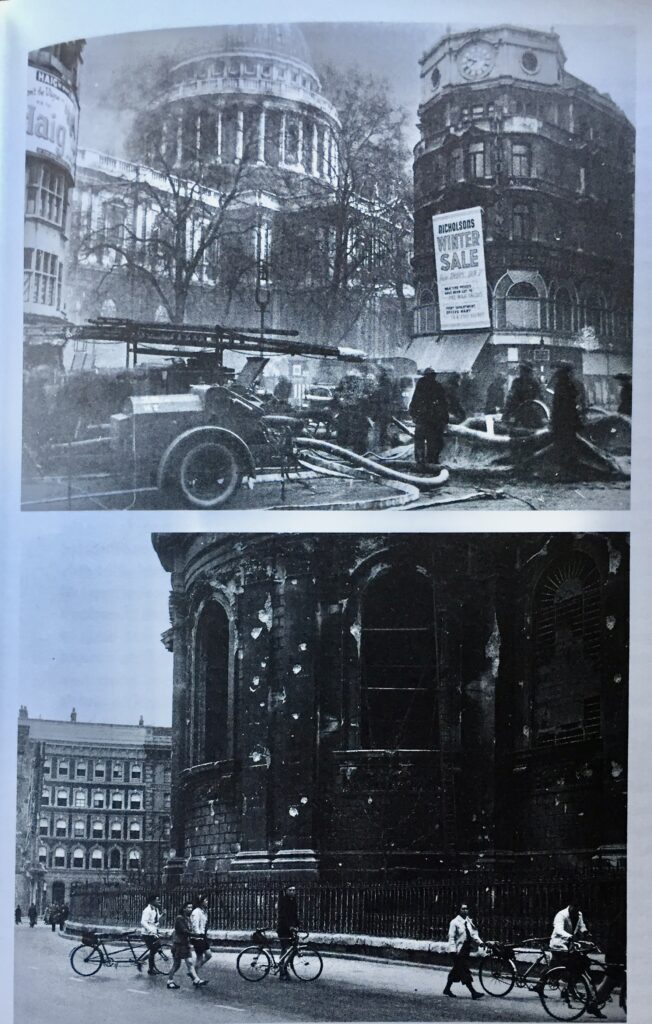
Two things strike me about the lower photograph. Firstly how dirty the cathedral stonework had become after over 300 years of London pollution. Secondly, two of those shrapnel marks that stand out so clearly against the soot-stained cathedral are still preserved today …
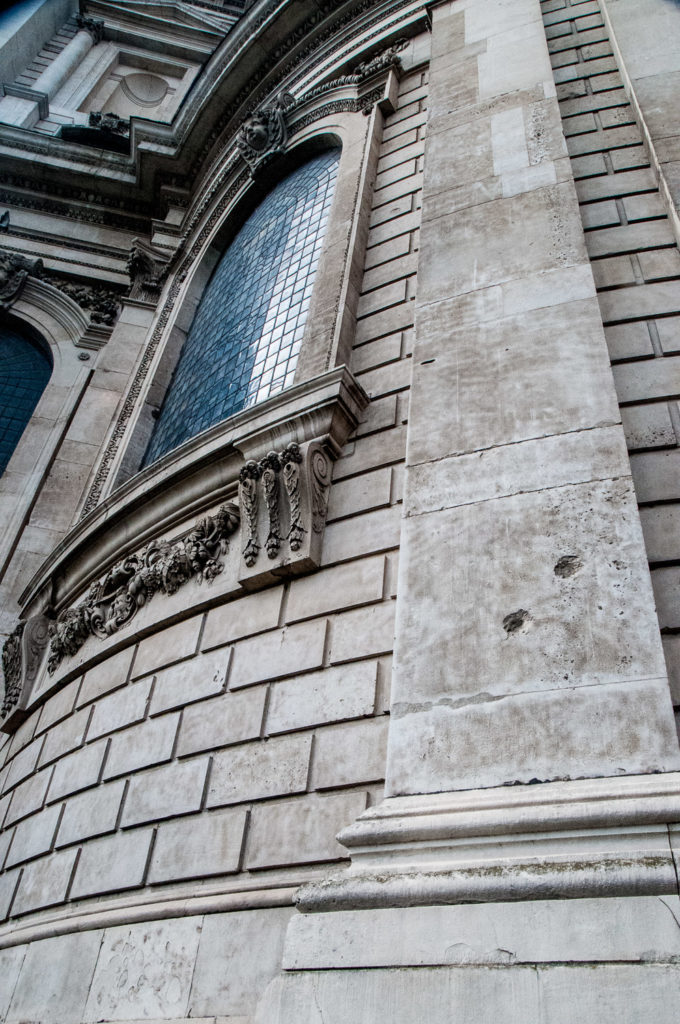
This aerial view shows how close the Cathedral came to destruction …
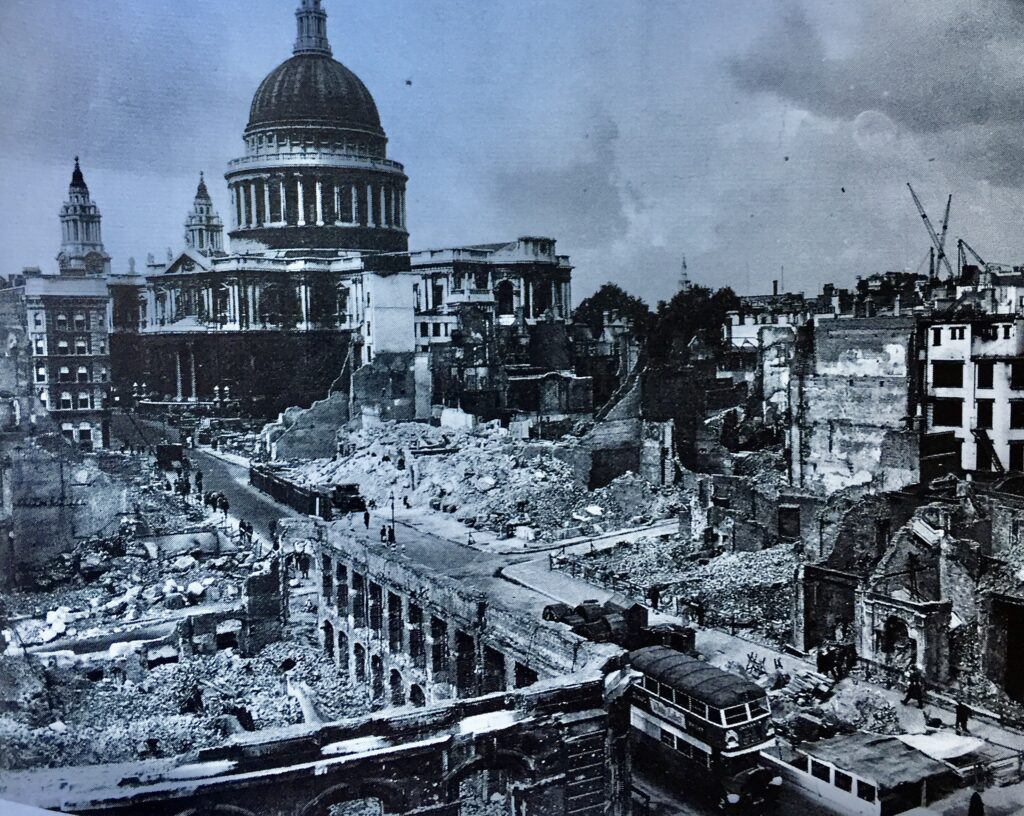
The view today …
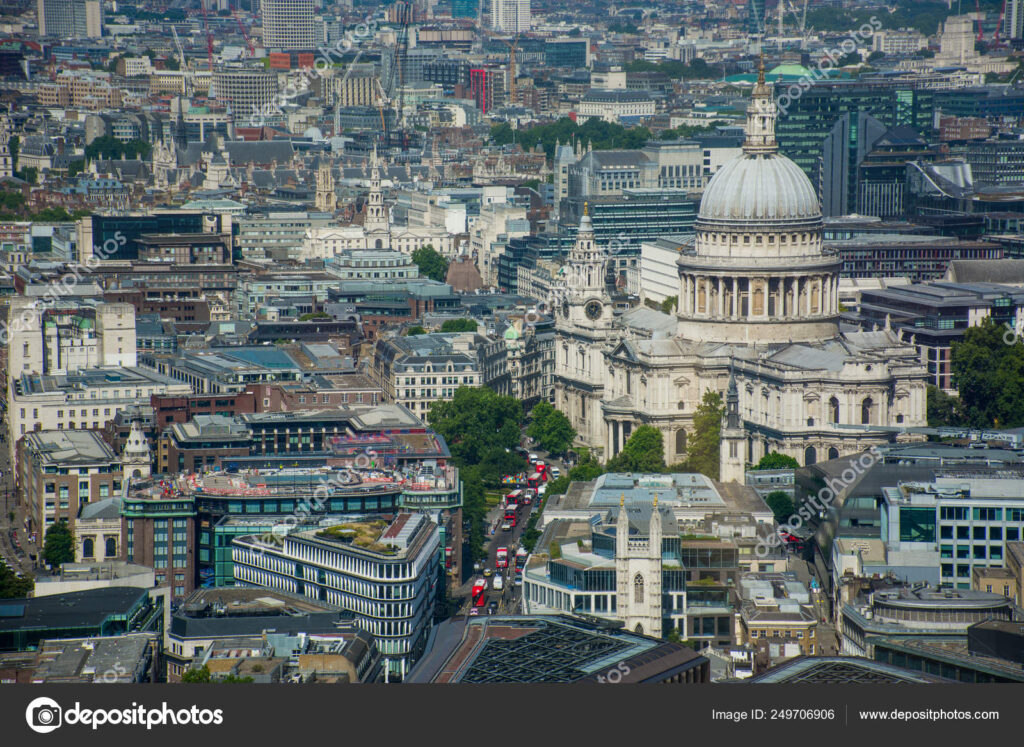
As a result of the bombing, many of the narrow alleys nearby dating from medieval times simply disappeared as did Paternoster Row (although the name still lives on) …
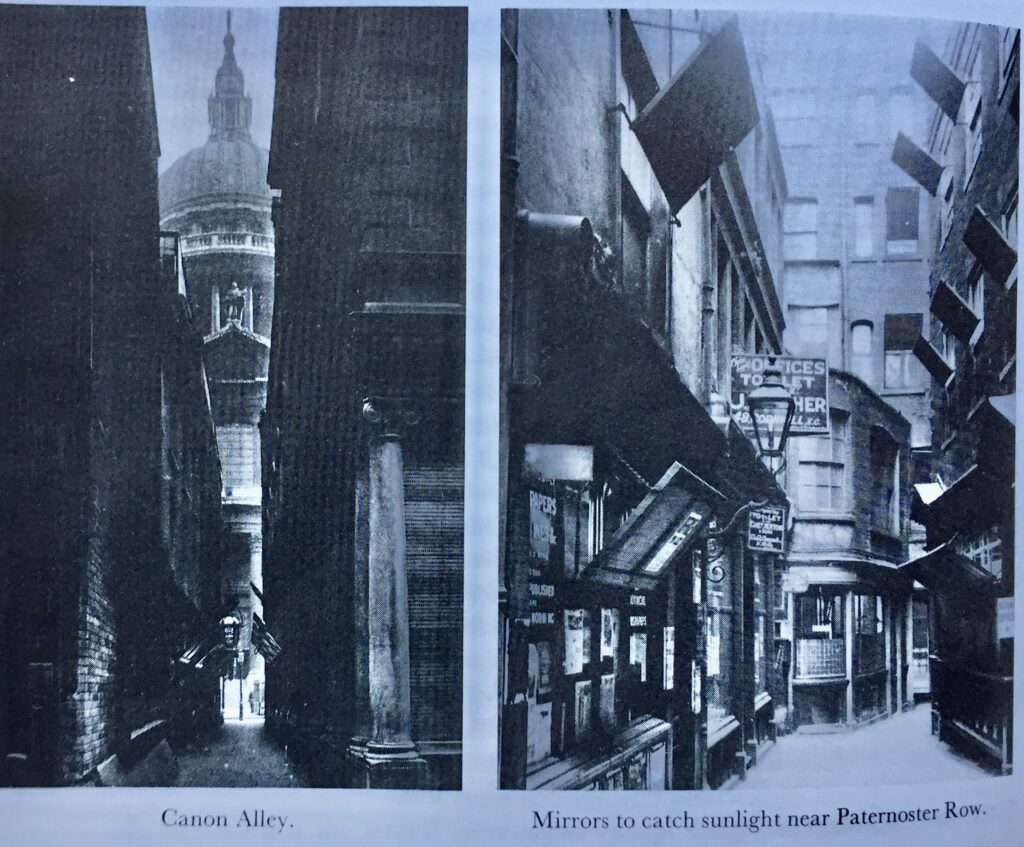
This picture is entitled ‘Prince Albert raises his hat as Holborn Circus burns behind him‘ …
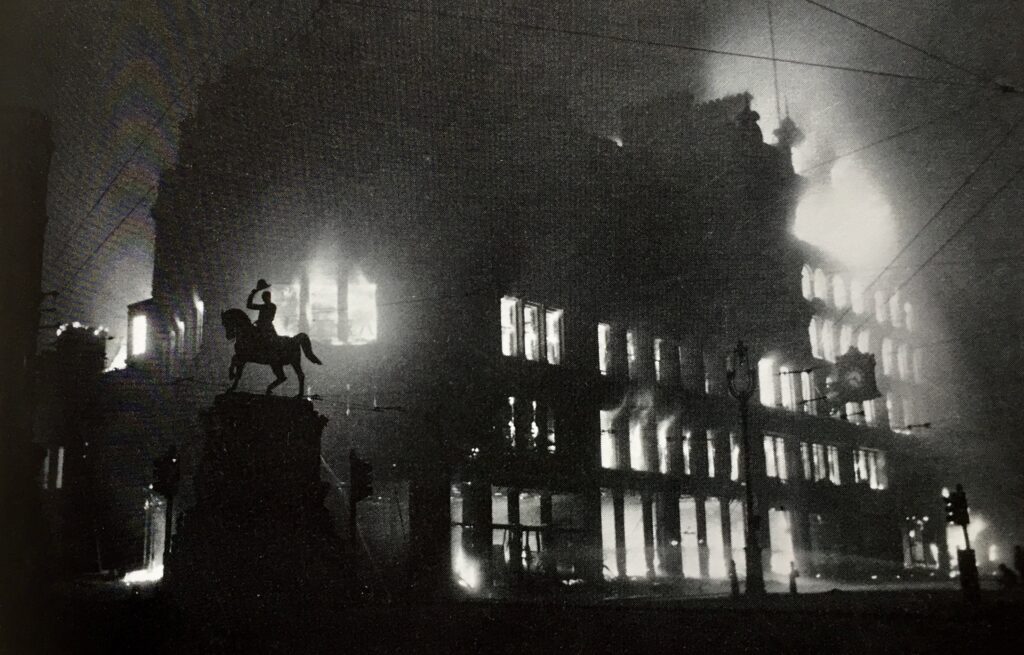
And he is still there in the same jaunty pose, albeit relocated a few yards to the east. You can read more about the statue here …
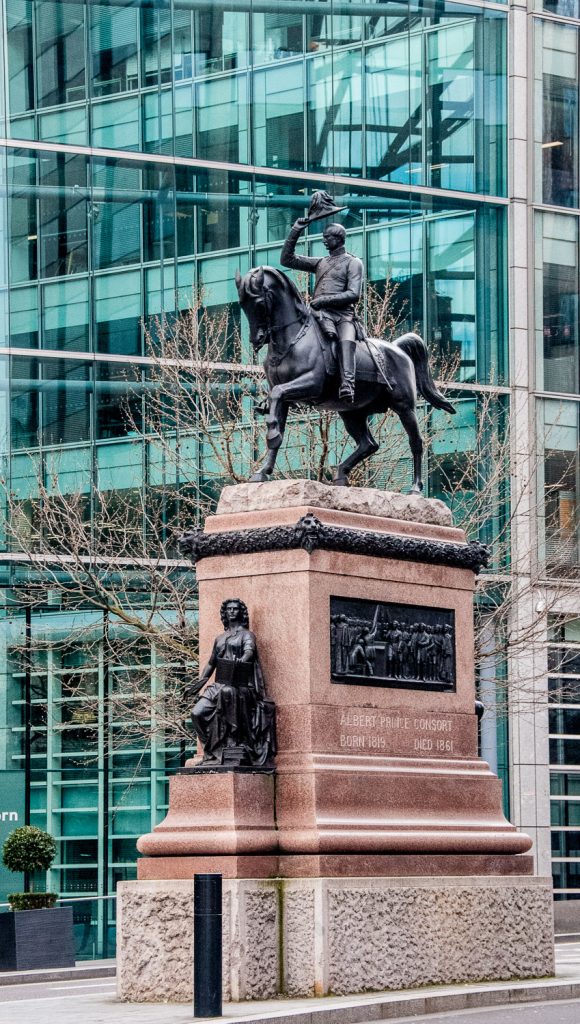
St Clement Danes was seriously damaged …
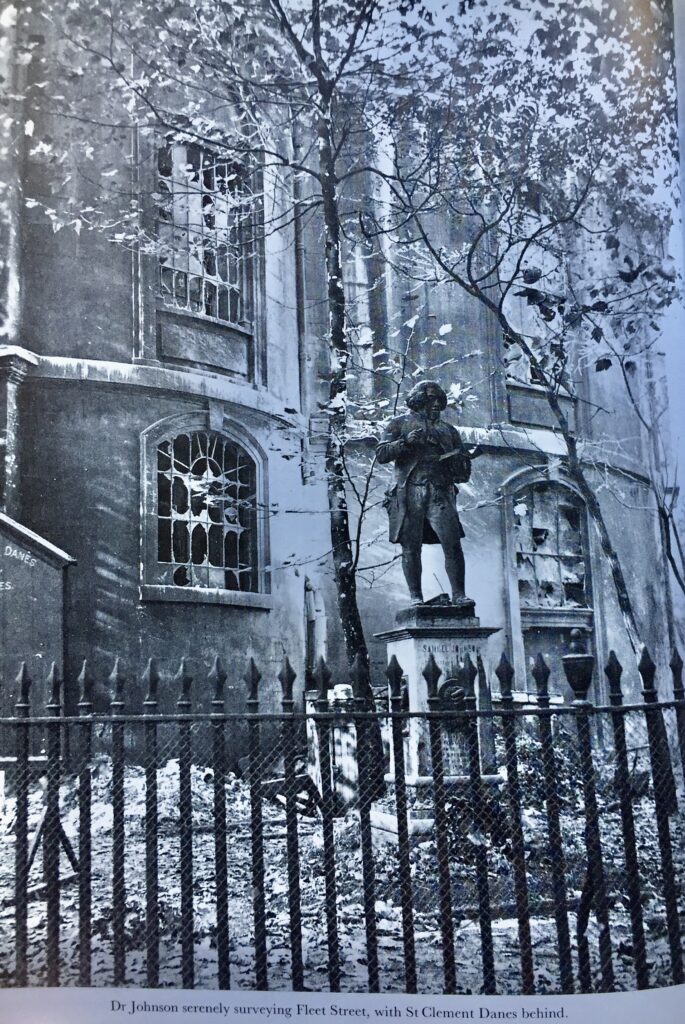
But eighty years later Dr Johnson carries on nonchalantly reading his book. He is no longer imprisoned behind railings and has a fully restored church behind him …
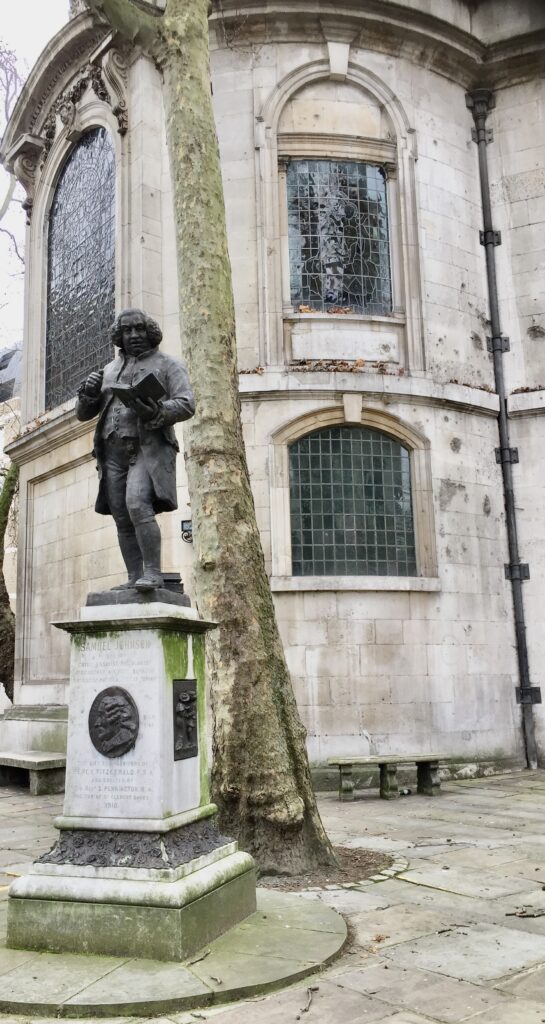
The building still bears its Second World War scars …
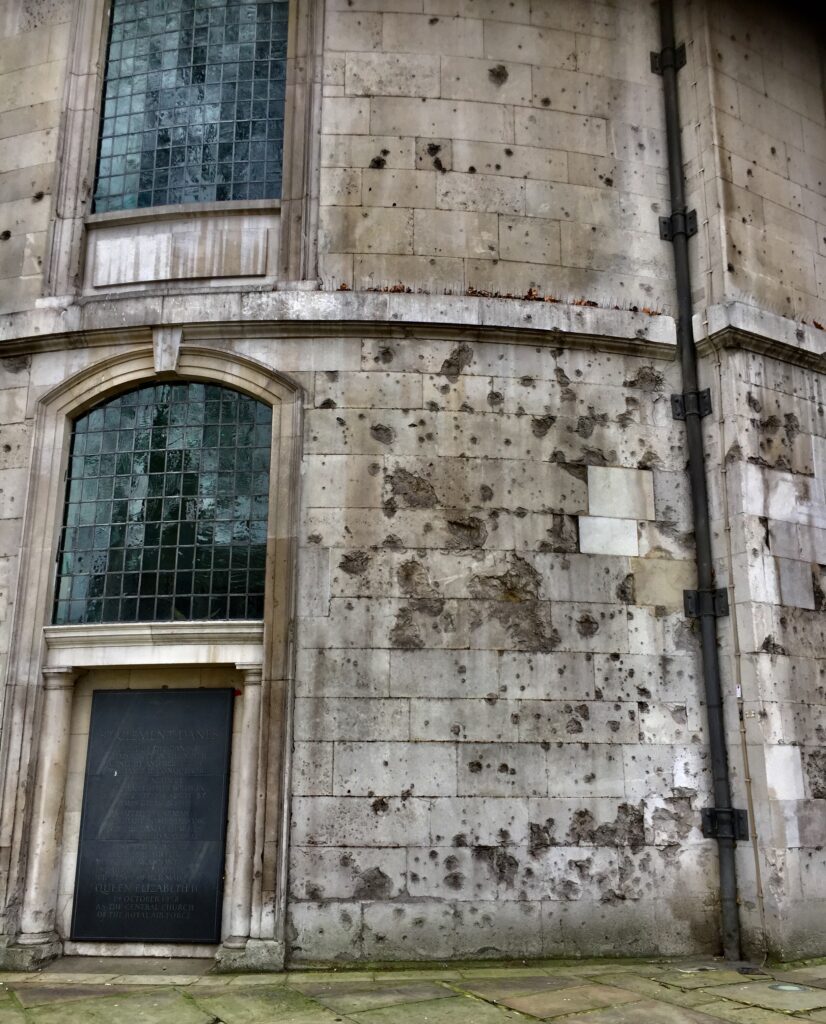
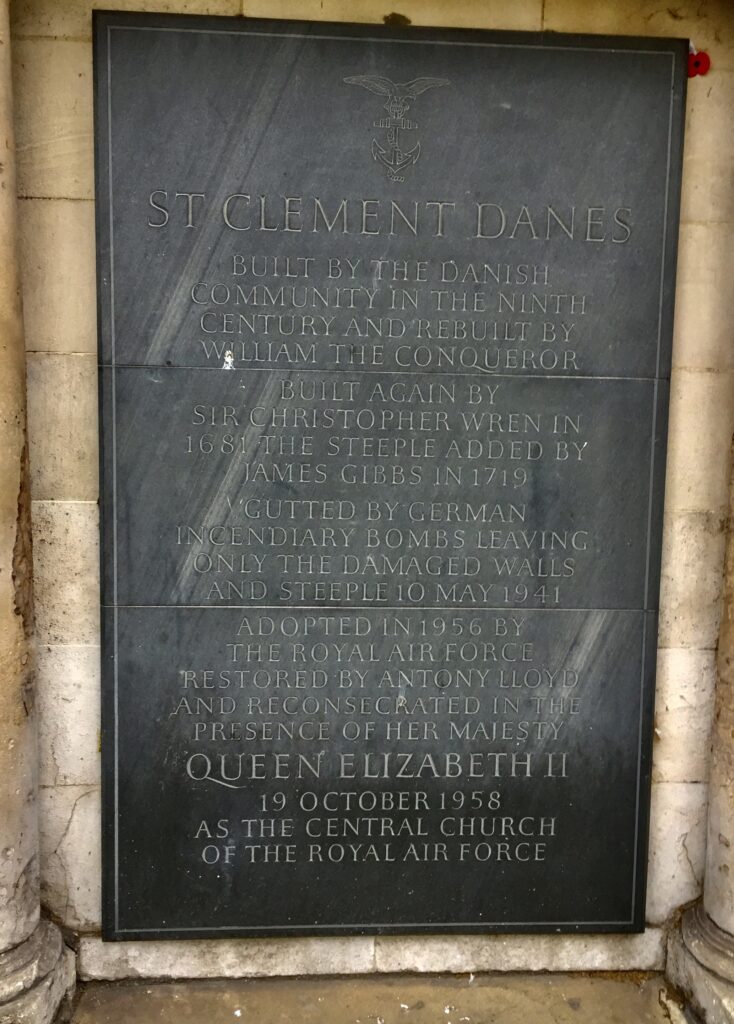
In the book I consulted for these photographs the good Doctor gets a further mention …
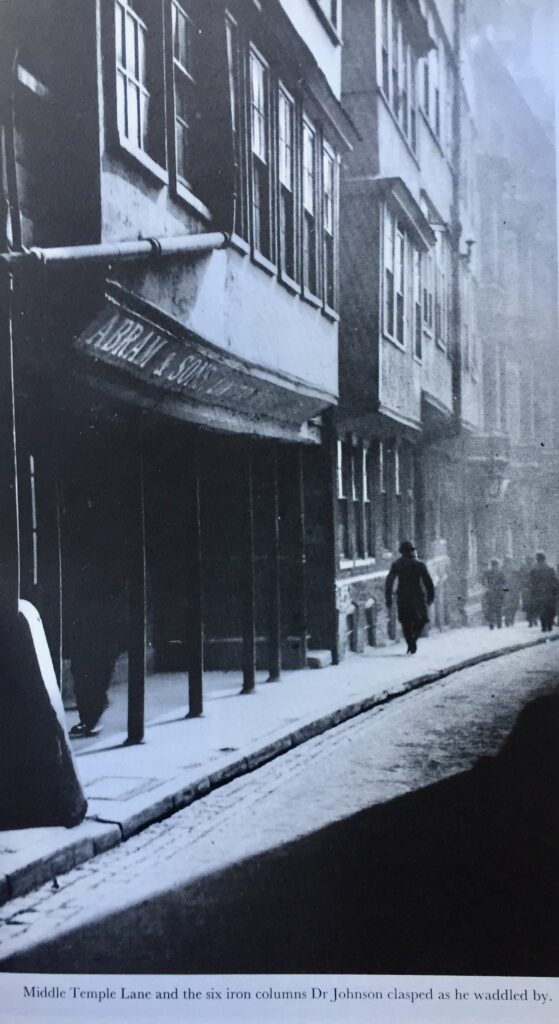
Nothing much has changed. The photograph above is looking south from Fleet Street, this is the view today looking north …
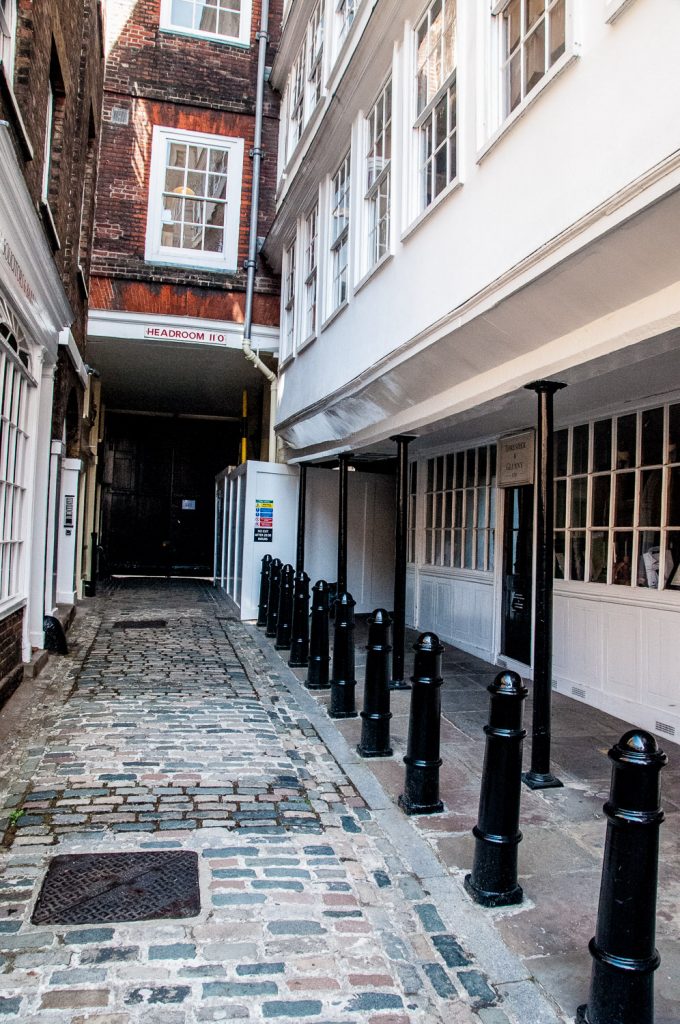
St Mary-le-Bow was completely gutted. I was moved by this poignant picture of a service being conducted in the roofless building in 1941 …
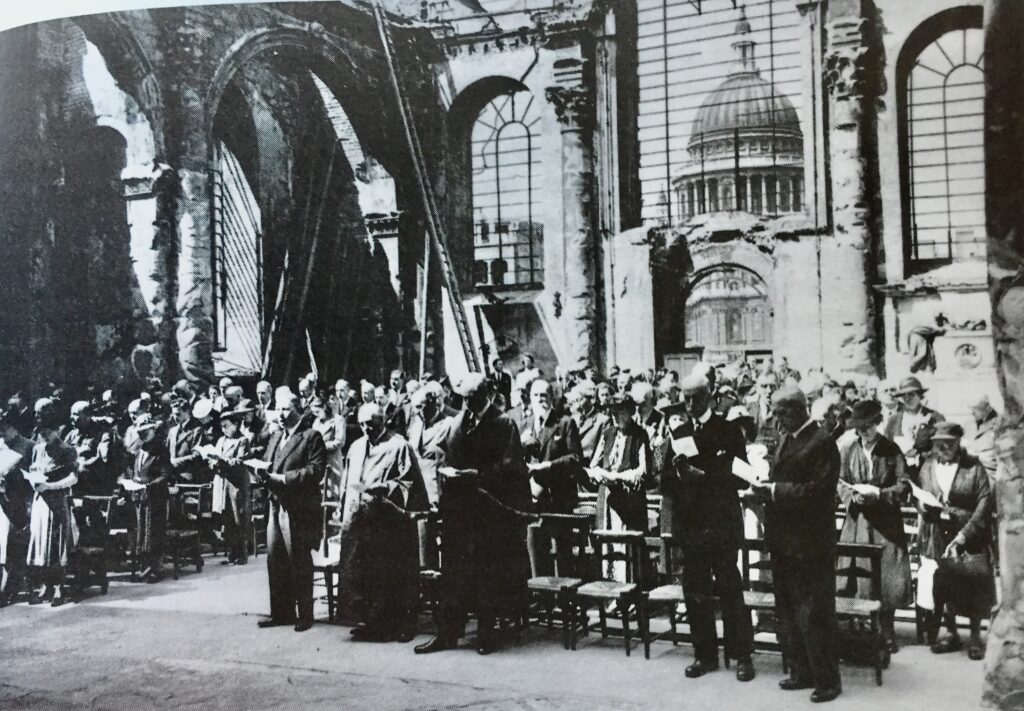
I am pretty sure that the window behind them that gives the unusual view of St Paul’s has now been filled with this beautiful stained glass work by John Hayward. Here the Virgin Mary cradles the church named after her as if it were a child, surrounded by church spires that survived the Blitz …
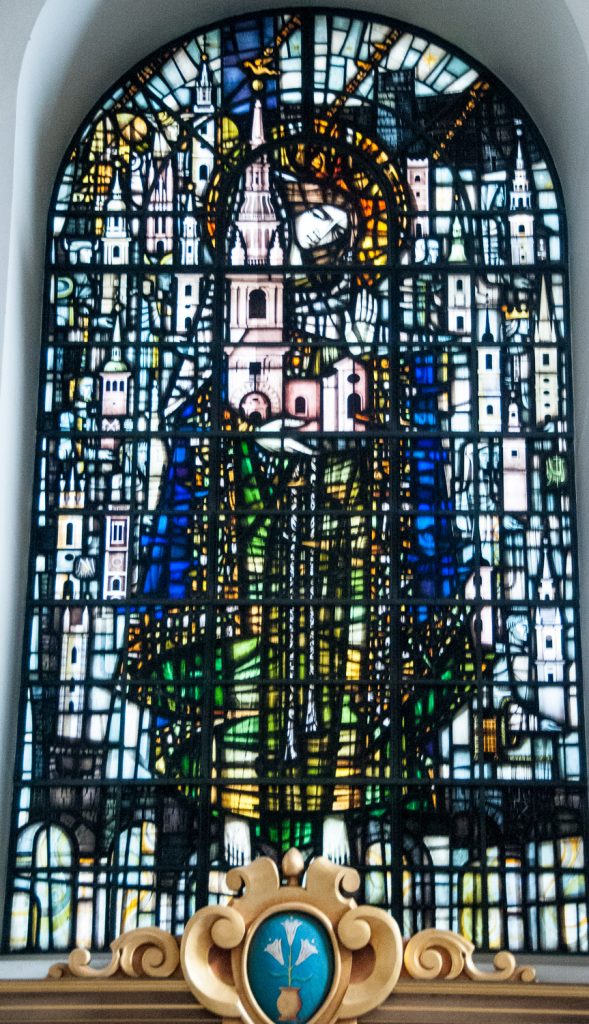
St Lawrence Jewry was also terribly damaged with only the walls and steeple remaining. This picture was taken on 30th December 1940 …
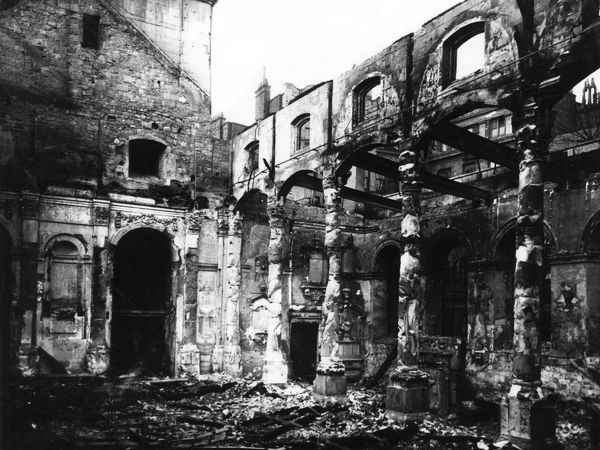
Now fully restored, it contains some of my favourite stained glass by Christopher Webb. In one window an angel holds the roofless, windowless church filled with rubble. In the background St Paul’s is illuminated by flames and searchlights pierce the sky as buildings burn …
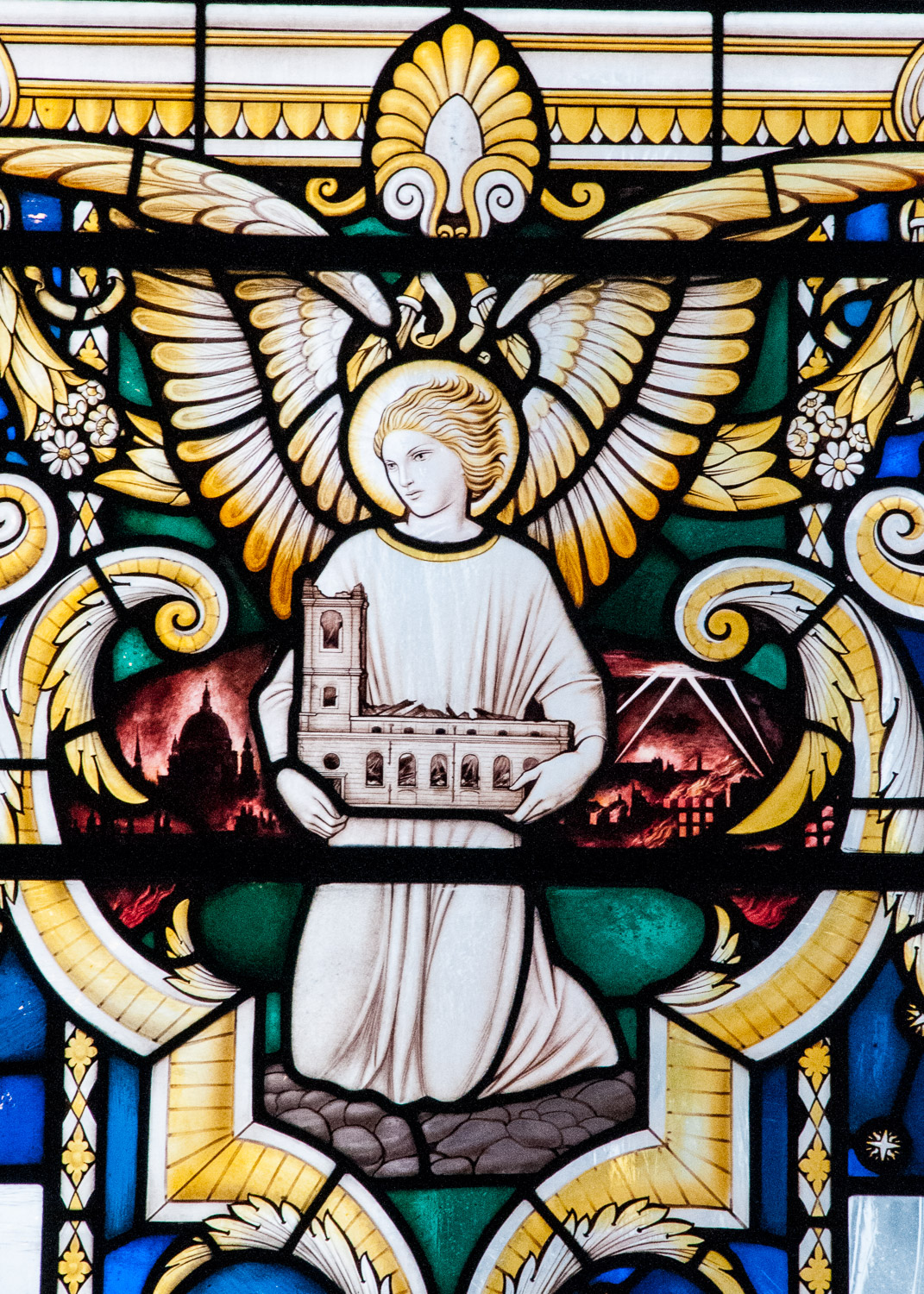
In another the angel holds the restored building …
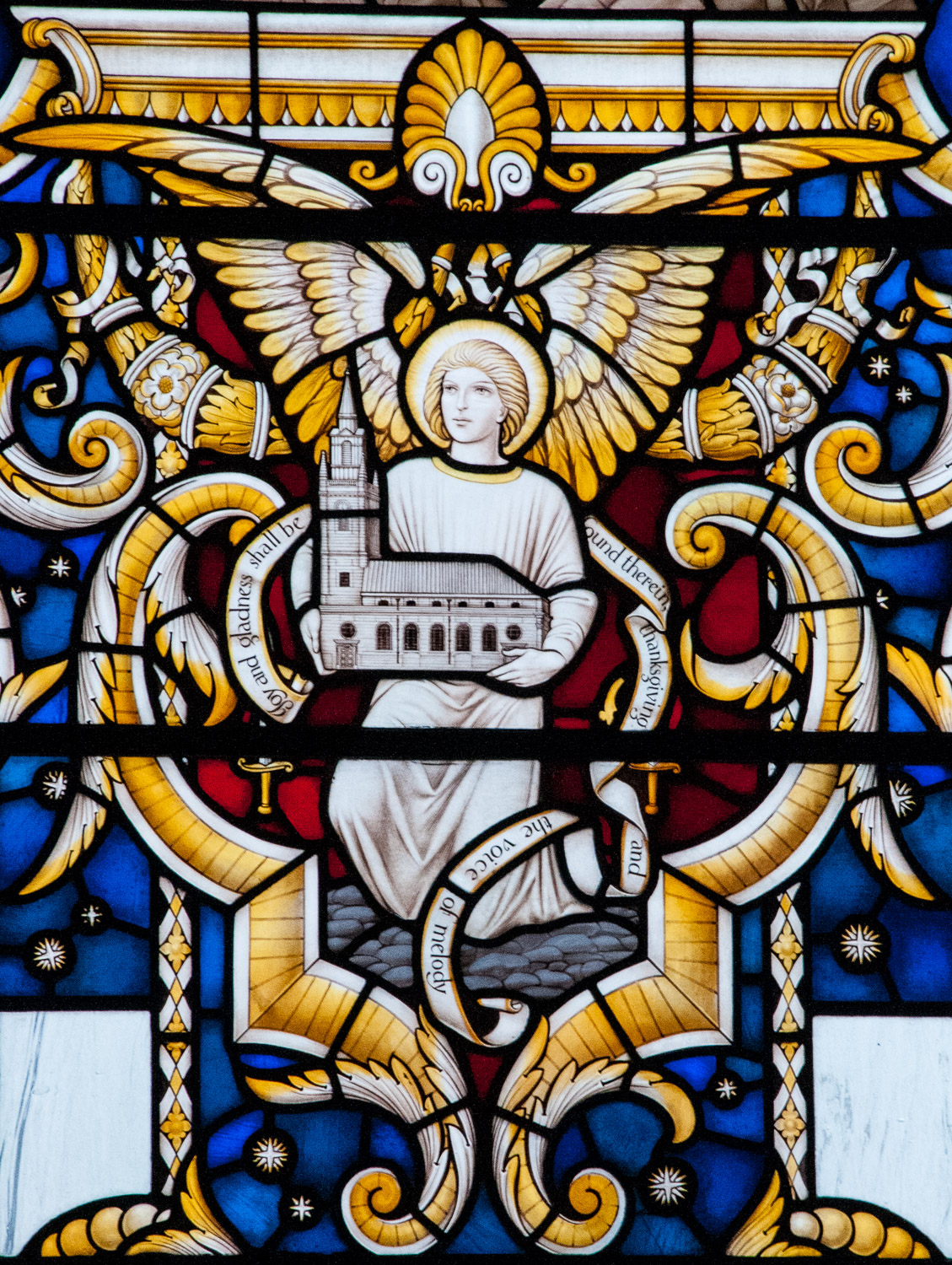
I have written previously about the lovely stained glass that can be found in the City and you can access the blog here : Dick Whittington, Hipster, City Stained Glass.
London Wall on the morning after the big December 1940 attack …
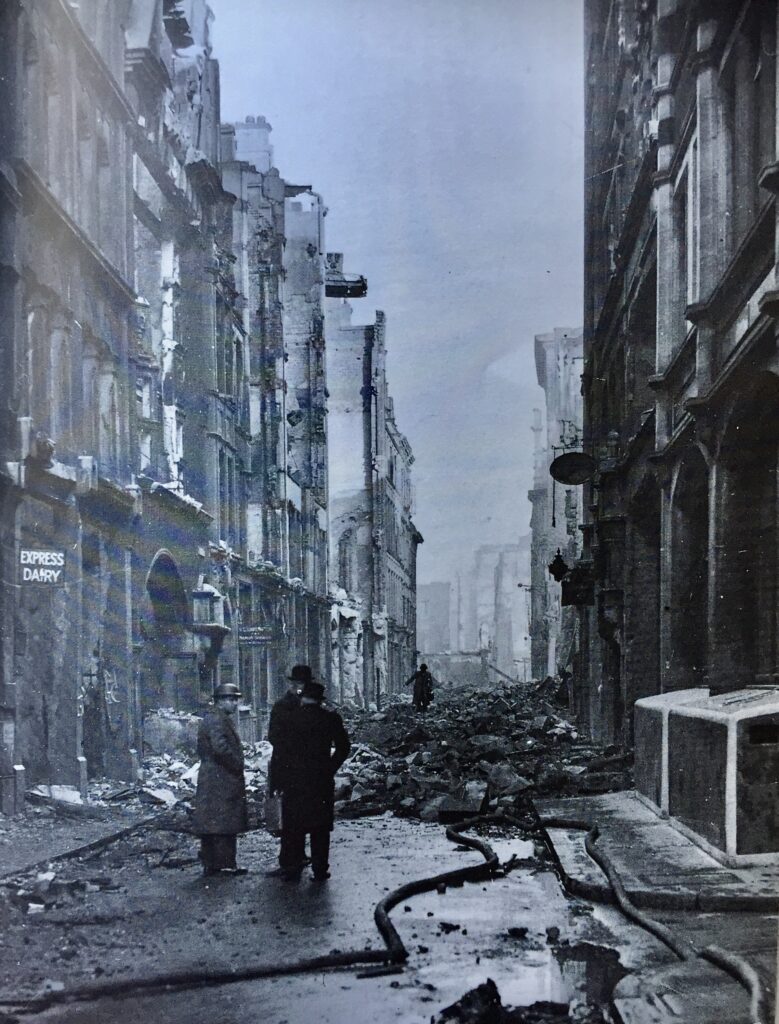
A scene typical of what Londoners faced on returning to work after an air raid. Fire hoses snake across the rubble filled street.
In this image a War Artist records the damage in Cannon Street …
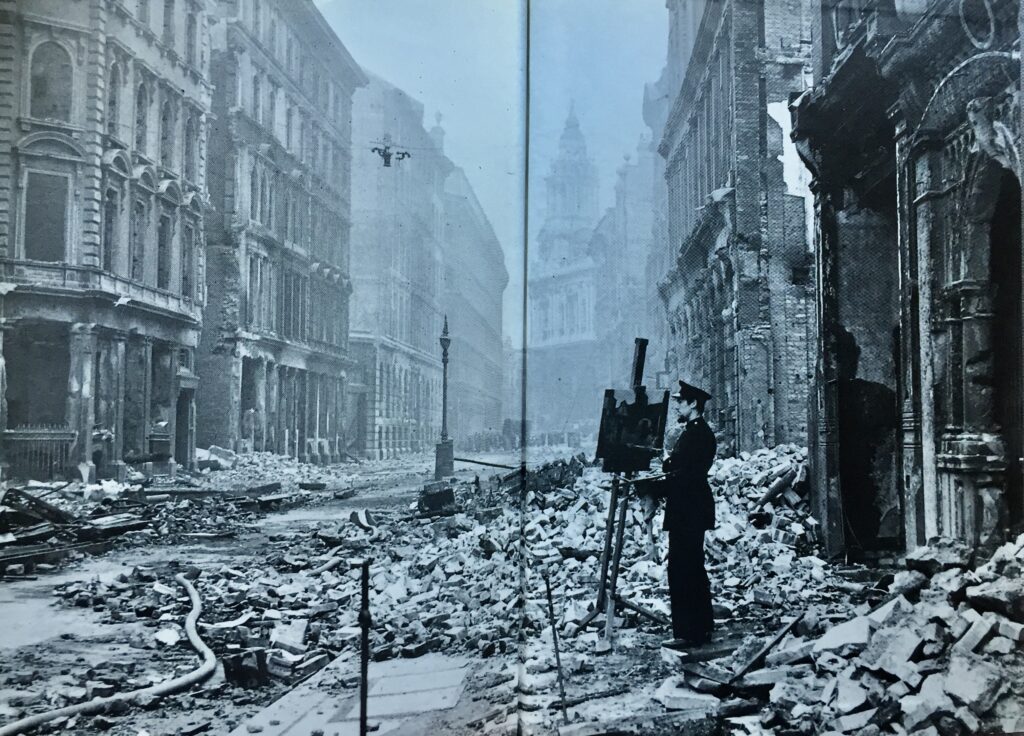
The view today, as close as I can get it without being run over …
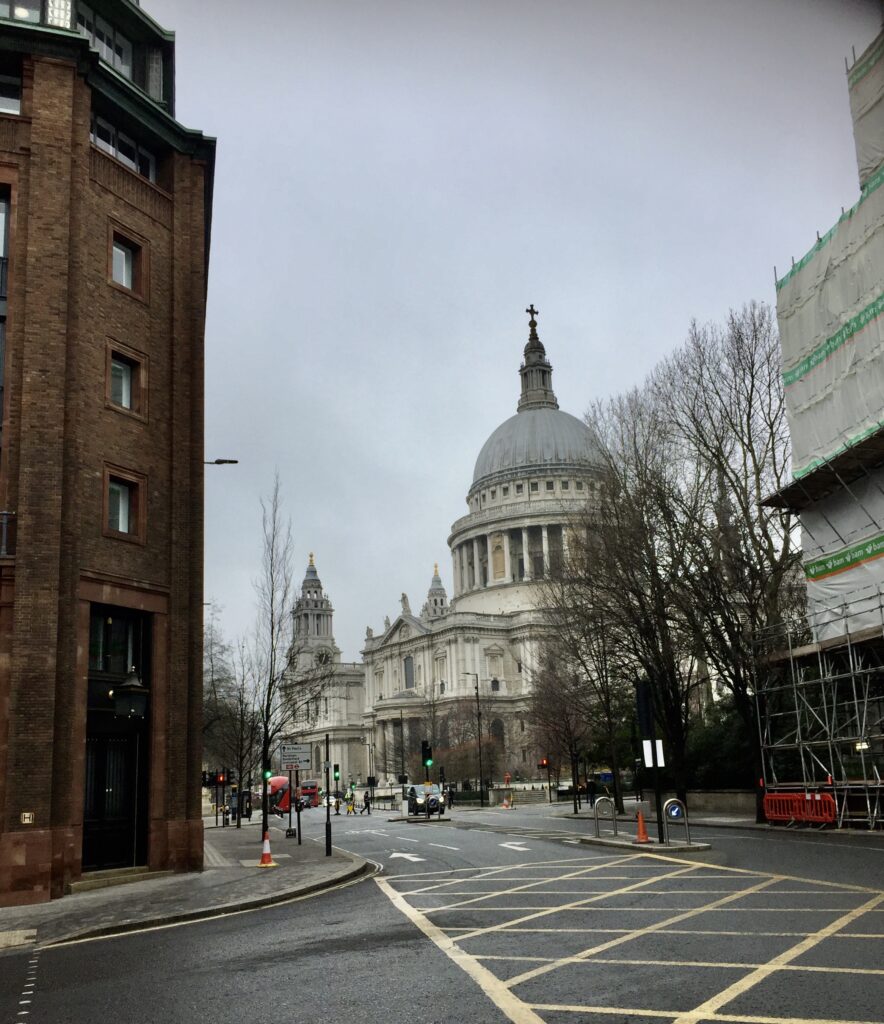
Christ Church Greyfriars, Newgate Street, could not be saved …
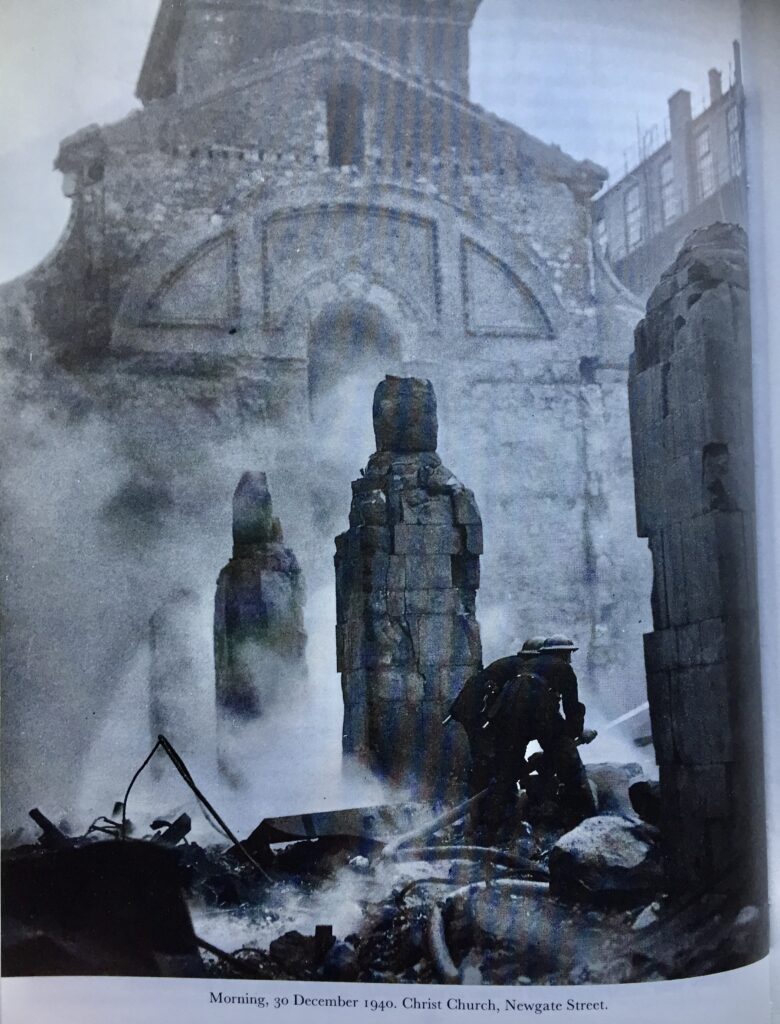
It’s now laid out as a garden …
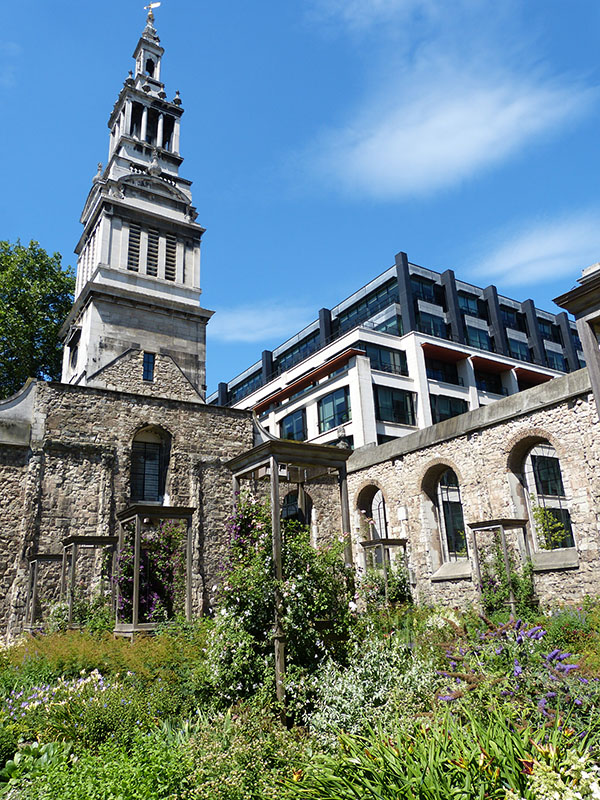
It’s impossible to consider the history of London without referencing some of the great disasters which have befallen it in the past and last year, living in Covid times, I published a piece about the terrible pestilence of 1665 : Samuel Pepys and the Plague – ‘God preserve us all‘.
I’m not making direct comparisons between these past disasters and the current pandemic – just reminding myself that even after terrible events a kind of normality usually returns, although life is never exactly the same as before. What seems to be unchanging, however, is people’s resilience and a spirit of helping others that I find positively uplifting.
I am indebted to the author of this book for some of the wartime photographs. It also contains a fascinating commentary …
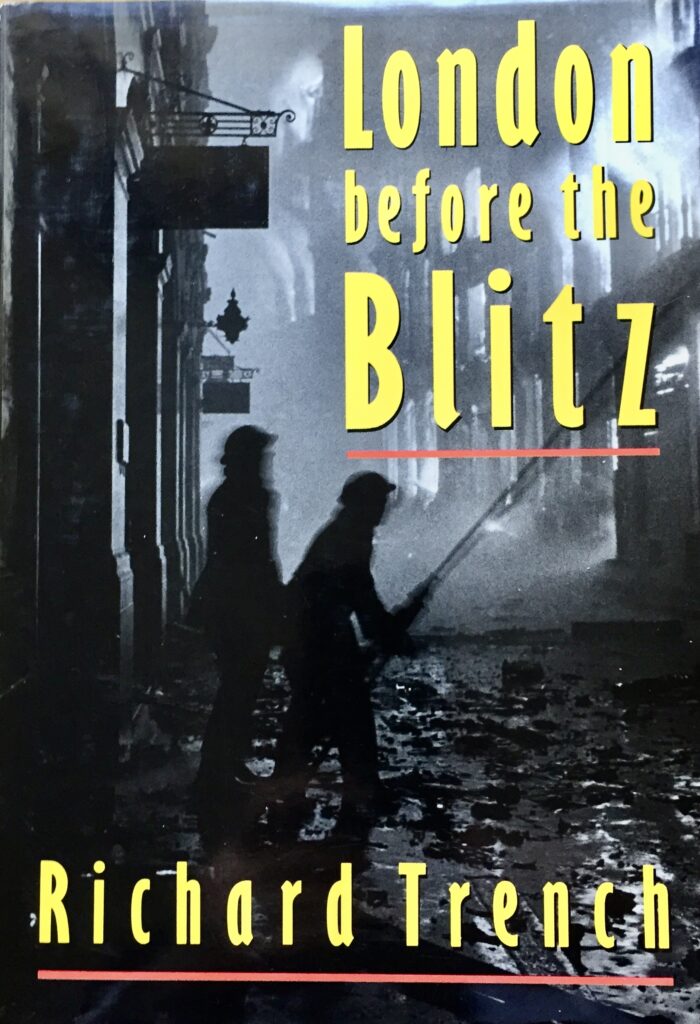
I have also used quotations and pictures from from the excellent London Inheritance blog which you can access here.
If you would like to follow me on Instagram here is the link …

